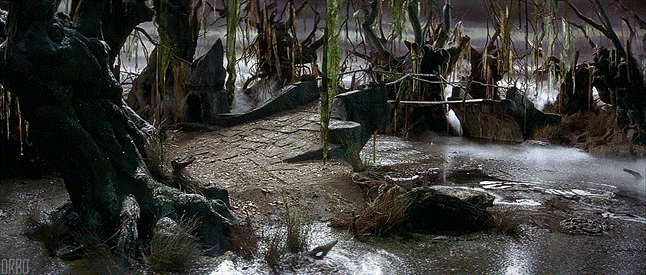
The American Heritage Dictionary defines a bog as “an area of soft, naturally waterlogged ground.” By this definition, many tumors qualify as bog- or swamp-like i.e., they are “Bogstacles” given the degree to which blood flow through them is not only sluggish but also in some places waterlogged or stagnant.
Just as bogs are usually flooded and poorly aerated, so limited oxygen availability or hypoxia is a characteristic feature of tumors because of their irregular, tortuous, and spaghettified vasculature, as shown below, which gives rise to stagnant blood flow, swelling/edema, and high internal pressures that cause plasma to bubble up to the surface.

Tumor cells need oxygen to survive and thrive. The lower the oxygen levels, the slower that tumor cells grow and the less sensitive they are to anticancer agents like chemotherapy that preferentially target and kill rapidly growing cells.
Also, sluggish blood flow reduces the delivery and uptake not only of anticancer drugs, but also oxygen on whose presence radiotherapy depends to damage tumors. Thus, hypoxia is a major, major problem that underlies therapeutic resistance to multiple anticancer agents including radiotherapy.
One class of therapeutic agents called vascular endothelial growth factor (VEGF)-inhibitors may temporarily improve tumor vessel maturity, blood flow, oxygenation, and drug delivery. Perhaps the most popular anti-cancer drug in the world is Avastin (Bevacizumab), which targets VEGF and depending on the dose, normalizes the abnormal tumor vessels.
Another vascular normalizer in development is EpicentRx’s lead small molecule, RRx-001 (nibrozetone). In preclinical and clinical studies RRx-001 (nibrozetone) has consistently shown that it consistently increases tumor blood flow and the delivery of several chemotherapy agents, immune cells and oxygen as a result.
This makes RRx-001 (nibrozetone) a potential “Bogstacle Beater.”
